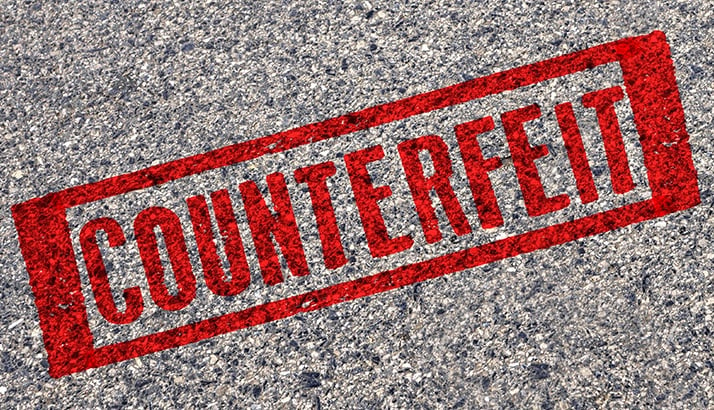
Counterfeiters have advanced far beyond faux designer handbags. In seizure operations from fiscal year 2017, U.S. Customs and Border Protection confiscated convincing imitations of automobile parts, pharmaceuticals, semiconductor devices, and consumer electronics.1 Product Liability challenges may arise when counterfeit products or components destroy the integrity of a supply chain.
Figure 1 U.S Customs and Border Protection. "Fake Goods, Real Dangers." Accessed June 2018.
The market for counterfeit goods has shifted from back-alley transactions, wherein the buyer has opted for a counterfeit purchase, to e-commerce transactions. Often these goods are found on highly reputable retail websites, in an effort to trick the consumer into buying a counterfeit good.2
Consider the bodily injury implications of faulty microchips in an electronic wearable medical device. A manufacturer may not be aware of the existence of the counterfeit components, yet has a duty of reasonable care to protect consumer against the faulty part. The Commercial General Liability Form (CG 00 01 04/13) notes it will respond when “legally obligated to pay.” This could include inaction of the insured to properly vet suppliers. “Your product,” as defined in the policy, includes any goods manufactured, sold, handled, distributed, or disposed of by others trading under the insured's name. Leaving the medical device manufacturer to indemnify claimants, the microchip supplier’s GL carrier may deny coverage for the bodily injury claim and recall expenses based on the “Expected or Intended Injury” and “Recall of Products, Work or Impaired Property” exclusions.
Product Liability claims commonly follow the product to the manufacturer, yet dealers or retailers may be held liable for failure to secure integrity of component parts. In addition to contract review, retailers may want to consider requiring manufacturers and wholesalers to name them as an additional insured to their GL policies via the ISO CG 20 15 (04/13) Additional Insured – Vendors endorsement. The loss must arise out of the named insured's products that the vendor sells or distributes as part of its regular business, and coverage would not be any broader than what is provided by contract or extended by law.
An additional effective protection against counterfeit disruption of the supply chain may involve an internal survey of the enterprise risk management plan. Moreover, many original equipment manufacturers (OEMs) are actively informing consumers and distributors of existence of fakes in the marketplace and providing guides on how to spot counterfeit components or imitation products.
An insurance policy, key business partner contract, and ERM supply chain quality control review can help safeguard the integrity of your products and your brand.
1U.S. Customs and Border Protection. “Intellectual Property Rights Seizure Statistics: Fiscal Year 2017.” March 2018. Accessed June 2018.
2GAO. “Intellectual Property: Agencies Can Improve Efforts to Address Risks Posed by Changing Counterfeits Market.” Page 14. January 2018. Accessed June 2018.
Bose Corporation. "Counterfeit Products." Accessed August 2018.
Hyundai Motor America. "There's No Substitute for Hyundai Genuine Parts." Accessed August 2018.
National Underwriter Company. FC&S Bulletins. “Products – Completed Operations Coverage.” May 1, 2017. ReferenceConnect. Accessed June 2018.

Sarah Hanson is a Vice President, Account Executive with Old Republic Risk Management. She is responsible for leading the relationship with clients and brokers by marketing and underwriting casualty insurance programs for large corporations and group captives in the risk management marketplace. Sarah assists Old Republic's efforts in the Midwest region.